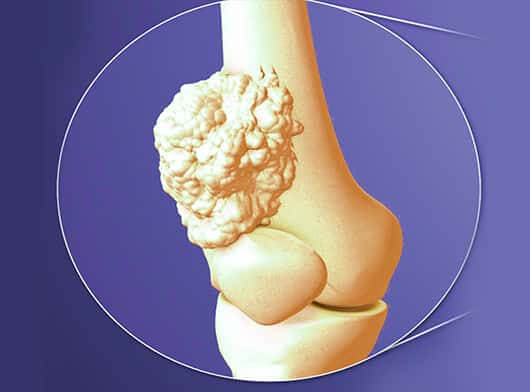- Imaging
- Laboratory
- X-rays - It is usually the first imaging tool used to detect bone anomalies. An X-ray is a quick, painless test that produces images of the structures inside the body — particularly bones.
- CT scan is a diagnostic imaging procedure that uses x-rays to build cross-sectional images of the body. It also helps to identify the spread of cancer.
- Magnetic resonance imaging (MRI) uses the interaction of radio waves and magnetic field, which is processed in a high-speed computer system to produce detailed scan pictures of the tissue, organs, bones, ligament and cartilage. It may be useful in detecting tumors and their metastases. This diagnostic technique offers greater soft tissue contrast than a CT scan.
- PET CTis considered to assess spread to regional nodes or distant metastases to other parts of the body. It provides functional and morphological details by utilizing radiation derived from Isotope labeled Glucose molecules to detect cellular glucose uptake, in cancer.
- Bone Scan - A bone scan is a nuclear imaging test that helps to diagnose several types of bone disease that cannot be seen on a standard X-ray. A bone scan is an important tool for the detection of cancer that has metastasized to the bone.
- Bone Biopsy It is a procedure done to remove a sample of bone tissue for laboratory testing. They include:
- Needle Biopsy - Inserting a needle through your skin and into a tumor to remove small pieces of tissue from the tumor. This is done under CT scan guidance.
- Open/ Surgical Biopsy - During a surgical biopsy, the doctor makes an incision through the skin and removes either the entire tumor (excisional biopsy) or a portion of the tumor (incisional biopsy)



.png)
